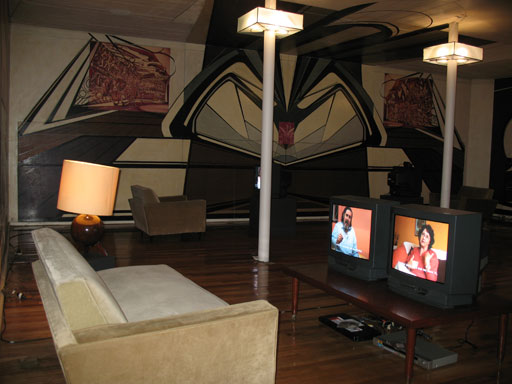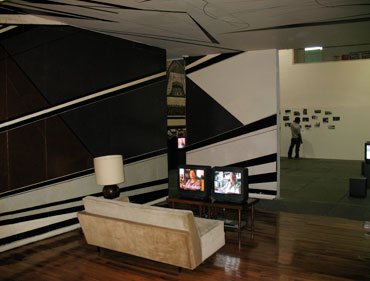Home / / Photo / Sculptures / Curatorial Projects / Bio / Contact
![]()

![]()

![]()

>stills and quotes
>installation views
>68 archive photos
>back
![]() installation views SAPS
installation views SAPS
![]()
MEXICO 68 at Sala de Arte Público Siqueiros
by Jorge Reynoso Pohlenz
The 40th anniversary of the 1968 student movement was commemorated with a considerable number of events: exhibitions, publications, conferences, and television and radio programs. Not only did the National Autonomous University of Mexico and the National Polytechnic Institute— the direct heirs to the movement—program an outstanding number of activities; so did the city and other public and private institutions. It seems that, from a political perspective, the tragedy of Tlatelolco and the government's repression of the 1968 movement are being assimilated in a similar way to any other relevant tragic historical event that lies in the past at a safe and respectable distance. An institutional assimilation of these kinds of events implies providing them with a positive reading: they are a lesson, a moral, an event that allows us to direct our steps towards the project of nation we aspire to. Within that point of view—a mixture of documentary history and political interpretation of "historical destiny"—the 1968 movement was a fundamental precursor for Mexico's democratic development, since it advocated larger and more legitimate spaces of social participation—spaces that did not exist forty years ago. However, this reading sometimes eludes the exercise of contrasting the demands and expectations of the 1968 movement with the possible achievements and current state of Mexican democracy. The process of "museumizing" 1968 can derive from a standardization of its senses, of its causes and effects; it can reduce its complexity and paradoxes through the very process of revealing it and adapting it to present power plays and to the existing institutional mosaic.
On the other hand, the museumization of historical tragedies generally resorts to popularly effective and emotive means of audiovisual poetics: the social assimilation of tragedy usually privileges poetic catharsis over (possibly impossible) rationalization exercises. When the tragedy is not the death of a hero, but rather a genocide, the poetics of something quantitavely abominable is underscored, unless one resorts to the strategy of novels, which explore the vicissitudes of a few representative and likeable characters. Heidrun Holzfeind ruled out both possibilities, opting for the seemingly cold means of documentary compilation. But the way in which Holzfeind deployed the documentary project does not rule out an emotive approach; rather, it returns it to the very actors of the student movement. From the present, these very actors evaluate and weigh out the personal and social repercussions of their participation in the movement. Holzfeind's project undeniably demands a degree of attention and discipline from the public far from that demanded by many works of contemporary art related to historical reflection. But the effort of paying attention to the totality of interviews and other documents allows one to experience a "retrospection" of Mexico's 1968, in a fashion closer to the horizon of human relations--a horizon that admits the paradox, complexity and problematization of relationships between individuals and their world.
I am pleased that this project was presented in Mexico at the Sala de Arte Público Siqueiros. Although that particular muralist was convinced that true social transformation should come from a proletarian base and not from student initiatives, he himself was imprisoned for four years for the crime of "social dissolution" that the students demanded were abolished, and when government repression began to cast a shadow over university life, he did not hesitate to support the social legitimacy of the movement. Although the exhibition's visit at the SAPS did not attract a massive audience, the perseverance of many young people and witnesses of ’68—some which reviewed the interviews for more than four hours—confirms that qualitative values still find space in museums in relation to quantitative demands. I believe that Siqueiros's aspiration of opening the Sala to expressions of socially committed art is completely coherent with the inclusion of works such as Holzfeind's, which present and demand a conscious and reflexive attitude towards reality and its past history.
Jorge Reynoso Pohlenz, 2008